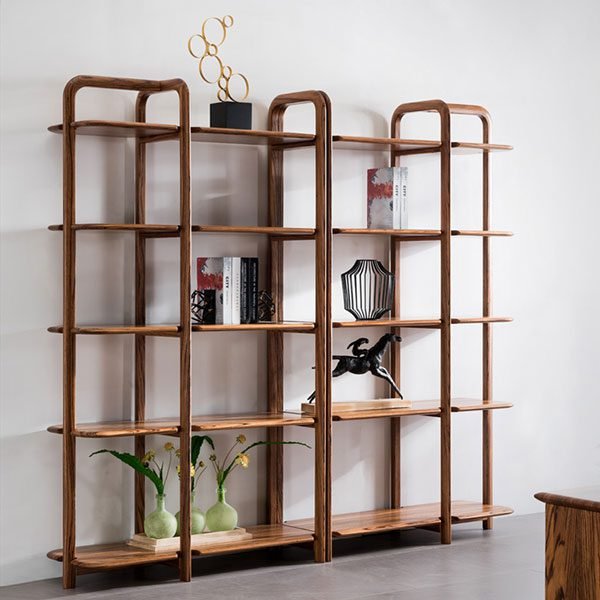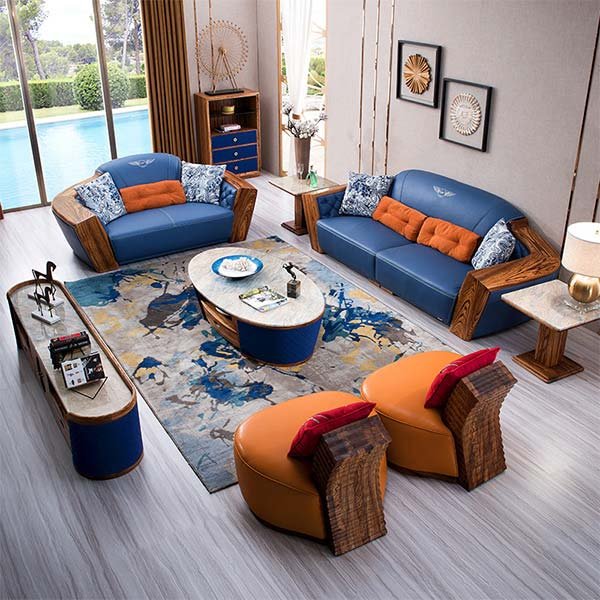“Transform your space with style and quality furniture.”
The Psychology Behind Furniture Purchases
The Psychology Behind Furniture Purchases
When it comes to buying furniture, there are various factors that influence our decisions. From the style and design to the functionality and price, our choices are often driven by our psychological needs and desires. Understanding the psychology behind furniture purchases can provide valuable insights into consumer behavior and help businesses cater to their customers’ preferences.
One of the primary psychological factors that influence furniture purchases is the need for self-expression. Furniture is not just a functional item; it is also a reflection of our personality and taste. People often choose furniture that aligns with their self-image and helps them create a desired ambiance in their homes. For example, someone who values minimalism and simplicity may opt for sleek and modern furniture, while someone who appreciates tradition and elegance may prefer classic and ornate pieces.
Another psychological factor that plays a role in furniture purchases is the need for comfort and relaxation. Furniture is where we unwind after a long day, spend quality time with loved ones, and create a cozy atmosphere. Therefore, people often prioritize comfort when choosing furniture. Soft cushions, ergonomic designs, and plush materials are all factors that contribute to the perception of comfort and influence purchasing decisions.
Additionally, the psychology of status and social comparison also comes into play when buying furniture. People often use their possessions, including furniture, as a way to signal their social status and gain approval from others. High-end brands and luxurious designs are often associated with wealth and success, making them desirable for those who seek social validation. On the other hand, some individuals may prefer unique and unconventional furniture to stand out from the crowd and showcase their individuality.
Furthermore, the psychology of nostalgia and emotional attachment can also influence furniture purchases. Certain pieces of furniture may hold sentimental value, reminding us of cherished memories or loved ones. People often seek to recreate these emotional connections by purchasing furniture that evokes similar feelings. Antique furniture or family heirlooms, for example, can provide a sense of nostalgia and comfort, making them highly desirable for some individuals.
Lastly, the psychology of affordability and value for money plays a significant role in furniture purchases. While some people may be willing to splurge on high-quality and expensive furniture, others prioritize affordability and practicality. The perception of value for money is subjective and varies from person to person. Some individuals may prioritize durability and long-term investment, while others may focus on finding budget-friendly options that meet their immediate needs.
In conclusion, the psychology behind furniture purchases is multifaceted and influenced by various factors. From the need for self-expression and comfort to the desire for social validation and emotional attachment, our choices are driven by our psychological needs and desires. Understanding these underlying motivations can help businesses tailor their offerings to meet the preferences of their target audience. Whether it’s creating a cozy and comfortable space or showcasing social status, furniture purchases are deeply rooted in our psychology.
Trends in Furniture Buying: What’s Hot and What’s Not
Trends in Furniture Buying: What’s Hot and What’s Not
Furniture is an essential part of any home or office. It not only serves a functional purpose but also adds style and personality to a space. As with any other industry, furniture trends come and go, and it’s important to stay updated on what’s hot and what’s not in the world of furniture buying.
One of the current trends in furniture buying is the shift towards sustainable and eco-friendly options. With increasing awareness about the impact of furniture production on the environment, more and more people are opting for furniture made from recycled materials or sustainably sourced wood. This trend is not only good for the planet but also for the health of individuals, as eco-friendly furniture is often free from harmful chemicals.
Another hot trend in furniture buying is the rise of multifunctional pieces. In today’s fast-paced world, people are looking for furniture that can serve multiple purposes and save space. For example, a sofa that can be transformed into a bed or a coffee table with built-in storage compartments. These versatile pieces not only provide practicality but also add a modern and sleek touch to any space.
On the other hand, some furniture trends are losing popularity. One such trend is the use of bulky and oversized furniture. In the past, large furniture pieces were seen as a sign of luxury and grandeur. However, with the rise of minimalistic and contemporary design, people are now opting for sleek and compact furniture that fits well in smaller spaces. This shift towards smaller furniture is also driven by the increasing number of people living in urban areas with limited space.
Additionally, traditional furniture styles are also losing their appeal. While classic and antique furniture will always have its charm, many people are now gravitating towards more modern and minimalist designs. Clean lines, neutral colors, and simple shapes are all the rage in furniture buying today. This trend reflects a desire for simplicity and a clutter-free living environment.
In terms of materials, natural and organic materials are gaining popularity. Furniture made from materials such as bamboo, rattan, and reclaimed wood are in high demand. These materials not only add a touch of nature to a space but also have a unique and rustic appeal. Moreover, they are often more durable and long-lasting compared to synthetic materials.
In conclusion, furniture buying trends are constantly evolving. The current trends include a focus on sustainability, multifunctionality, compact designs, and the use of natural materials. On the other hand, bulky and oversized furniture as well as traditional styles are losing their appeal. Staying updated on these trends can help you make informed decisions when it comes to buying furniture for your home or office. So, whether you’re looking to revamp your living room or furnish a new workspace, keep these trends in mind to stay ahead in the world of furniture buying.
Finding the Perfect Furniture for Your Home: Tips and Tricks
When it comes to finding the perfect furniture for your home, it’s important to consider who buys furniture. Understanding the demographics and preferences of furniture buyers can help you make informed decisions and find the right pieces for your space.
One key demographic that buys furniture is young adults who are just starting out on their own. These individuals often look for affordable and functional furniture that fits their budget and lifestyle. They may prioritize items that are easy to move and assemble, as they may be living in rental properties or frequently relocating.
Another group of furniture buyers is families with children. These buyers often prioritize durability and safety when choosing furniture. They may look for pieces that are easy to clean and resistant to stains and spills. Additionally, families with children may opt for furniture with built-in storage solutions to help keep their homes organized.
Empty nesters and retirees are also frequent furniture buyers. These individuals may be downsizing their homes or transitioning to a more minimalist lifestyle. They often prioritize comfort and quality when choosing furniture, as they may spend more time at home and want to create a cozy and inviting space.
In recent years, there has been a growing trend of environmentally conscious consumers who prioritize sustainable and eco-friendly furniture. These buyers may look for pieces made from recycled materials or produced using environmentally friendly manufacturing processes. They may also prioritize furniture that is free from harmful chemicals and toxins.
When it comes to finding the perfect furniture for your home, there are a few tips and tricks that can help guide your decision-making process. First, it’s important to measure your space and consider the layout before making any purchases. This will ensure that the furniture you choose fits properly and allows for easy movement within the room.
Additionally, it’s helpful to create a budget and stick to it. Furniture can be a significant investment, so it’s important to determine how much you’re willing to spend before you start shopping. This will help you narrow down your options and prevent overspending.
Another tip is to consider your personal style and preferences. Furniture is a reflection of your personality and taste, so it’s important to choose pieces that you love and that align with your overall aesthetic. Whether you prefer modern and minimalist designs or more traditional and ornate styles, there is furniture out there to suit every taste.
Lastly, don’t be afraid to shop around and compare prices. With so many retailers and online marketplaces available, it’s easy to find competitive prices and discounts. Take the time to research different options and read reviews to ensure you’re getting the best value for your money.
In conclusion, understanding who buys furniture can help you make informed decisions when it comes to finding the perfect pieces for your home. Whether you’re a young adult, a family with children, an empty nester, or an environmentally conscious consumer, there are furniture options available to suit your needs and preferences. By considering factors such as budget, space, style, and quality, you can find furniture that not only looks great but also meets your functional needs. Happy furniture shopping!
Заключение
Заключение: Покупателями мебели являются люди, которые нуждаются в обновлении или дополнении своего домашнего интерьера, а также организации и компании, которым требуется мебель для офисов, магазинов или других коммерческих помещений.



